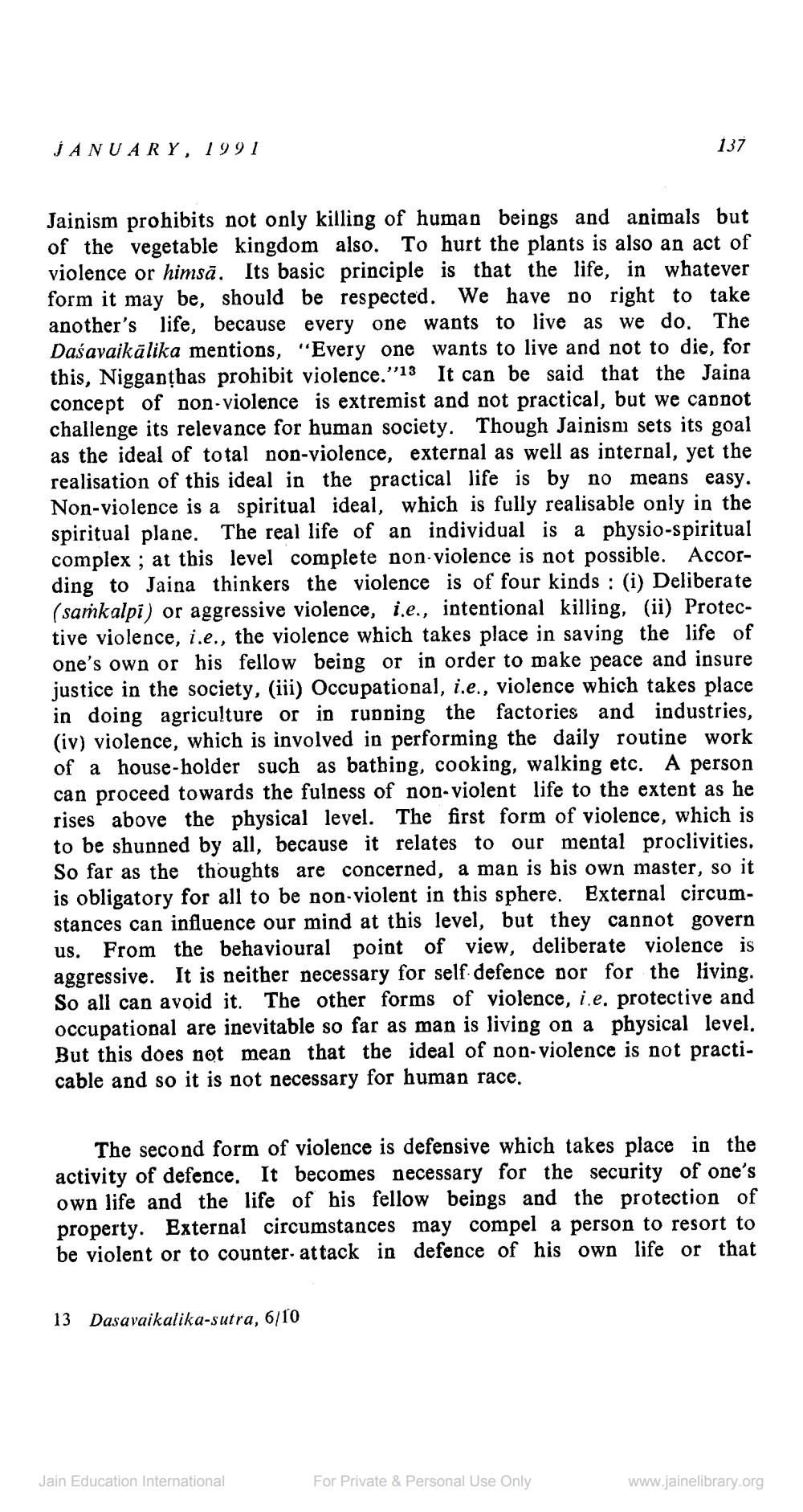________________
JANUARY, 1991
137
Jainism prohibits not only killing of human beings and animals but of the vegetable kingdom also. To hurt the plants is also an act of violence or himsā, Its basic principle is that the life, in whatever form it may be, should be respected. We have no right to take another's life, because every one wants to live as we do. The Daśavaikālika mentions, "Everyone wants to live and not to die, for this, Nigganțhas prohibit violence."'13 It can be said that the Jaina concept of non-violence is extremist and not practical, but we cannot challenge its relevance for human society. Though Jainism sets its goal as the ideal of total non-violence, external as well as internal, yet the realisation of this ideal in the practical life is by no means easy. Non-violence is a spiritual ideal, which is fully realisable only in the spiritual plane. The real life of an individual is a physio-spiritual complex ; at this level complete non-violence is not possible. According to Jaina thinkers the violence is of four kinds : (i) Deliberate (samkalpi) or aggressive violence, i.e., intentional killing, (ii) Protective violence, i.e., the violence which takes place in saving the life of one's own or his fellow being or in order to make peace and insure justice in the society, (iii) Occupational, i.e., violence which takes place in doing agriculture or in rupping the factories and industries, (iv) violence, which is involved in performing the daily routine work of a house-holder such as bathing, cooking, walking etc. A person can proceed towards the fulness of non-violent life to the extent as he rises above the physical level. The first form of violence, which is to be shunned by all, because it relates to our mental proclivities. So far as the thoughts are concerned, a man is bis own master, so it is obligatory for all to be non-violent in this sphere. External circumstances can influence our mind at this level, but they cannot govern us. From the behavioural point of view, deliberate violence is aggressive. It is neither necessary for self defence por for the living. So all can avoid it. The other forms of violence, i.e. protective and occupational are inevitable so far as man is living on a physical level. But this does not mean that the ideal of non-violence is not practicable and so it is not necessary for human race.
The second form of violence is defensive which takes place in the activity of defence. It becomes necessary for the security of one's own life and the life of his fellow beings and the protection of property. External circumstances may compel a person to resort to be violent or to counter-attack in defence of his own life or that
13 Dasavaikalika-sutra, 6/10
Jain Education International
For Private & Personal Use Only
www.jainelibrary.org




